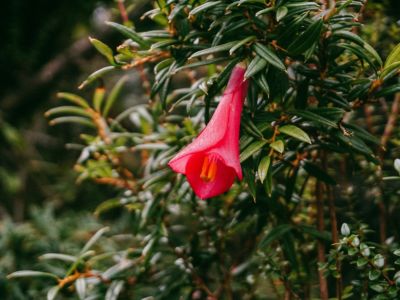Lapageria Plant Care
Lapageria rosea plants are long, spreading vines that can grow to 15 feet (4.6 m.) in length and spread just as wide. The leaves have a thick, leathery feeling that is shared by the flowers, which are 3-to 4-inch (7.6 -10 cm.) long pendulous bells that appear as red in nature but come in a range of colors in cultivation. The Chilean bellflower vine is evergreen, but hardy only in USDA zones 9a through 11. It can handle some frost, but extended cold will kill it. If you live in a colder area, you can grow your Chilean bellflower vine in a container. The plants do very well in well-draining, well-watered pots.
How to Grow a Chilean Bellflower Vine
Lapageria rosea plants are native to the coastal regions of Chile and, as such, they grow best in similarly warm and humid climates. The closest approximation to this in the United States is the San Francisco Bay area of California, where growing Chilean bellflowers is common. Wherever you grow it, Lapageria plant care takes a little bit of work. The plant prefers soil that is well draining but never dry, which means you may have to water it every day. The plant grows best in full to partial shade, making a great addition to shade gardens. The plant should blossom between July and December. The flowers may attract hummingbirds and, if pollinated, will produce a sweet, yellow fruit that is safe to eat though full of seeds.
